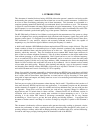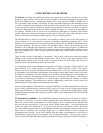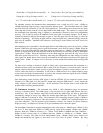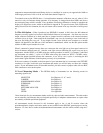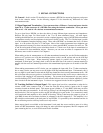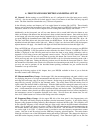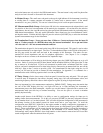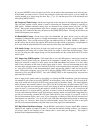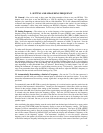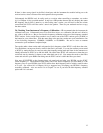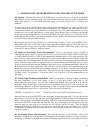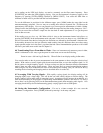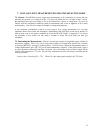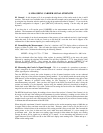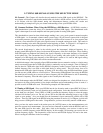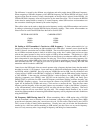11
5. SETTING AND MEASURING FREQUENCY
5.1 General - Now we’re ready to have some fun doing examples of how to use your HP3586. This
chapter we’ll show how to use the HP3586 as a VFO by adjusting its frequency and outputting this
frequency for controlling an outboard device like an AM transmitter. We’ll also command the instrument
to measure the frequency of a received AM carrier then lock its output to the carrier’s for zero beating to
another transmitter’s carrier along with checking your HP3586’s frequency calibration. These examples
can be used in all the selective measurement. For now stay in the low distortion selective mode.
5.2 Setting Frequency - The easiest way to set the frequency of the instrument is to enter the desired
frequency using the entry keyboard. On the entry keyboard first press [FREQ], enter a number for the
desired frequency on the keyboard. Then press one of the dual function [Hz], [KHz] or [MHz] buttons for
the units the frequency is in. The frequency display will now read the frequency you have just entered and
a CENTER annunciator on the display will light indicating this is the frequency the center of its selected
filter. It will also output this frequency to the back panel Fo connector at a 0dbm, 75 ohm level. Now the
HP3586 can be used as an outboard VFO for controlling other devices through its Fo connector. In
Appendix C is the schematic of an amplifier I use to drive my AM transmitters from this output.
To make small frequency adjustments you can use the frequency tune knob. But first you have to set up
the resolution of this control. First go to the entry panel and press [FREQ STEP] and enter on the
keyboard the step resolution you want, I usually use 10Hz or for fine tuning of carriers so let’s enter 10,
then press the [Hz] button for the units of the step you selected followed by the [MEAS CONT] button to
return the instruments to its measuring mode. Now go to the frequency tune knob and press the [FREQ
STEP] button. As you turn the knob you will see the frequency display change in 10Hz increments. Since
the instruments frequency register is being changed the tracking oscillator output at Fo is also changing
with the displayed frequency. For faster tuning you can press the [AUTO] button, which selects frequency
steps depending on what bandwidth filter you selected. Knob tuning is a handy feature I use for zero
beating the instrument’s Fo output to a carrier being receiving on my 75A4 receiver. I turn on the exciter
stage in my transmitter then using the HP3586’s frequency tune knob to adjust the HP3586’s frequency to
zero beat with the received carrier while listening to my 75A4.
5.3 Automatically Determining a Station’s Frequency – Be sure the 75 or 50 ohm connector is
connected in parallel with your receivers antenna input as described in the previous section. To use this
feature the instrument must be receiving a steady signal that’s stronger than any other signals in its filter’s
pass band.
To automatically tune the HP-3586 to exactly the frequency of a received carrier, tune the carrier into the
pass band of the instrument’s selected filter. I usually use the instrument’s widest filter, which we already
selected in the previous chapter when setting up the instrument. Turn up the volume knob on the audio
panel on the lower RH side of the front panel to hear signals being received and be sure either USB or LSB
is selected using the buttons below the frequency display. Press the [AUTO] button for the frequency
input knob and tune it into the filter’s pass band. Tune the tone for zero beat on one side of the filter’s band
pass and you should be able to confirm the carrier is the one you want to tune to by listening to the audio
from the carrier’s side band. Be sure you’re in the 10db measurement range and auto full scale for a good
speaker output.
After confirming the stations identity, tune the carrier back into the band pass indicated by a strong carrier
tone and press [COUNTER] under the frequency display to turn on the frequency counter. The display
frequency will now automatically lock onto the received carrier’s frequency. Next press [CNTR→FREQ]
on the keyboard entry panel to store the counter frequency in the frequency register then [COUNTER] to
turn off the counter followed by [MEAS CONT] and return the display and instrument’s frequency to the
new contents of the frequency register. The instrument’s frequency is now the carrier’s measured
frequency and in the speaker you should now hear the received carrier’s tone at around half the frequency
of the filters band pass frequency indicating the carrier is now exactly in the center of the filter’s pass band.



